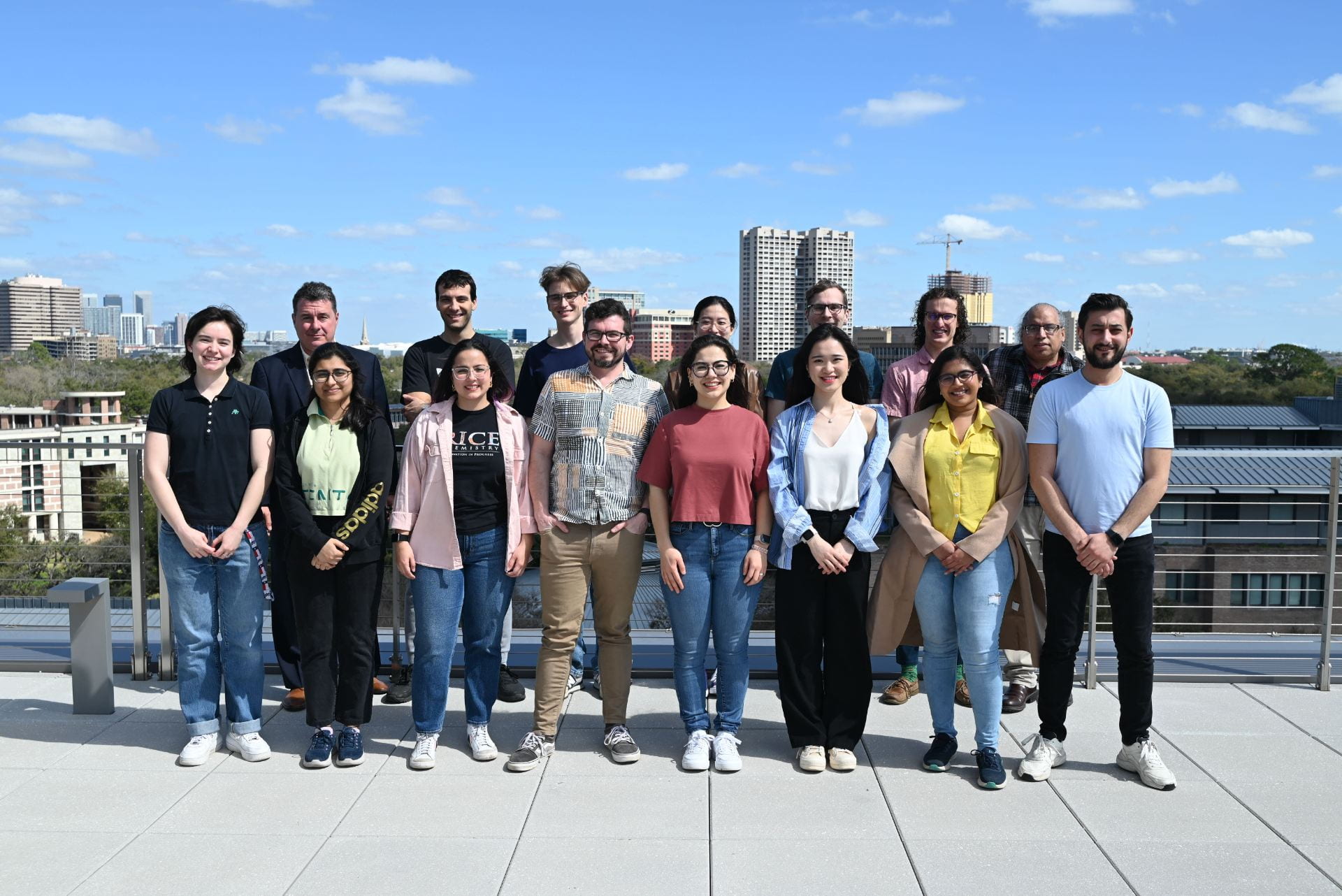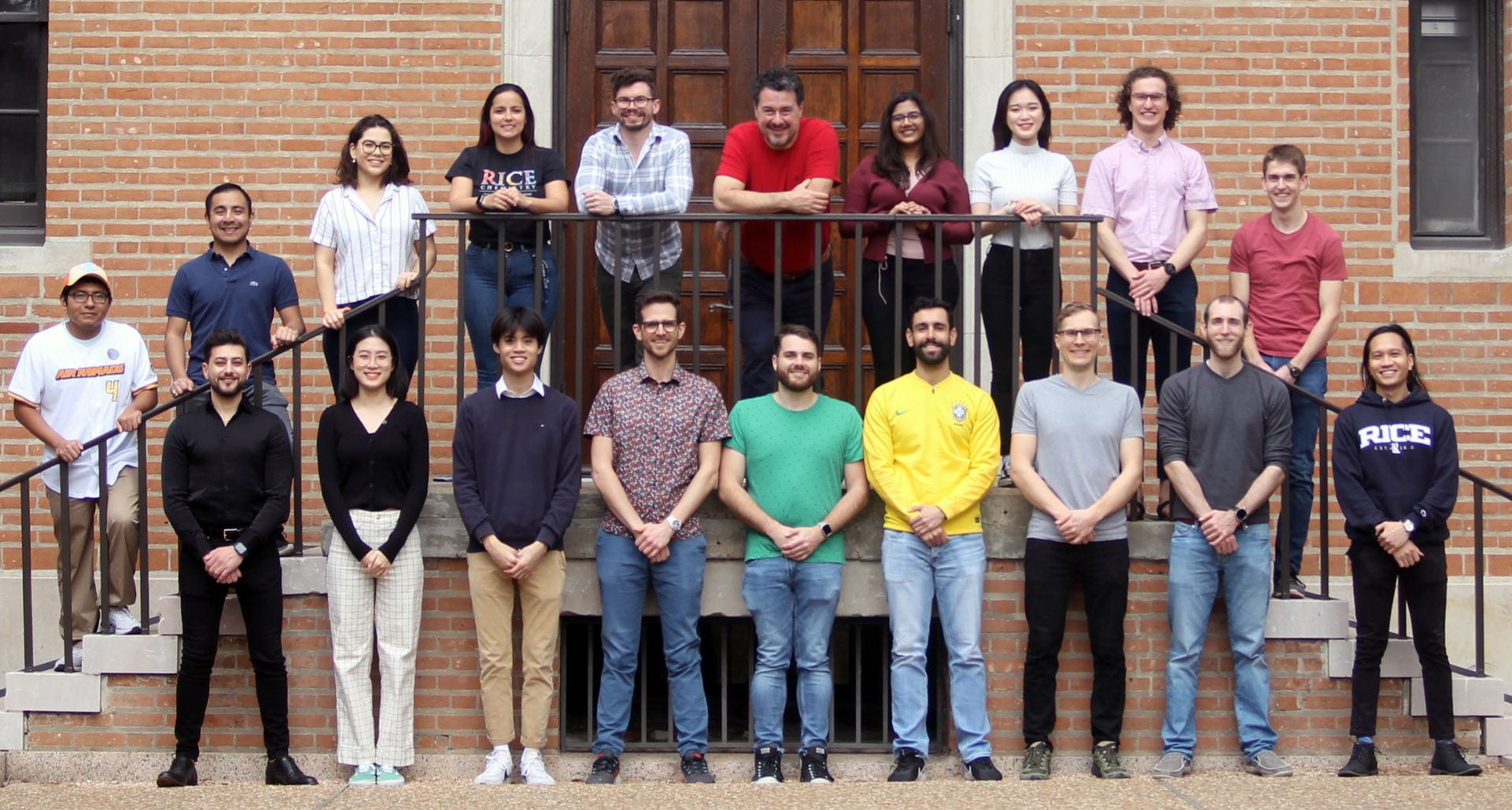The cf2 group, led by Prof. Matteo Pasquali, is developing sustainable high-value carbon materials (primarily CNTs and structures made from them) for metals displacement, paired with the production of clean hydrogen. Faced with the existential threat of global warming, the world needs to reduce greenhouse gas emissions in all sectors of society. The energy-intensive extraction and refining of metal ores represents one of the most significant sources of CO2, yet these materials are essential for use in construction, power transmission, and transportation. Our CNT synthesis method splits CH4 (or other abundant hydrocarbon feedstocks) into solid CNTs and H2. This method has the dual advantage sequestering carbon as a solid that would otherwise be released as CO2 if burned, and generating hydrogen that can be used as a clean fuel.
Synthesized carbon nanotubes (CNTs) are also processed in the Pasquali lab to create fibers that are as soft and flexible as silk, stronger than the Kevlar, and almost as conductive as copper (when normalized on a mass basis). As such, CNT fibers have several advantages over metals for a variety of applications (e.g. long-range power transmission, structural high-strength cables, weight reduction in land and aerospace vehicles, biomedical sensing and many more). Furthermore, the CNT materials are completely recyclable with minimal material property loss in fibers made from recycled vs pristine CNTs. By coupling synthesis, material development, and recycling of CNT materials, the Pasquali lab is at the forefront of the effort to decarbonize our world.

We are continuously looking for exceptional researchers to help us realizing our vision through advances in scientific understanding and technological applications. If you are interested in joining our group as a postdoctoral researcher, please send your CV and a statement of interest to Mingrui (Lily) Gong (mg111@rice.edu), Dr.Yang Lu (yl357@rice.edu), and Dr.Eldar Khabushev (ek65@rice.edu). In the upcoming years, we are actively looking for researchers with backgrounds and research interests relative to these fields:
- Chemical reaction engineering, reactor design, analysis of transport phenomena in chemical reactors;
- Phase behavior, fluid mechanics, and rheology of polymers to investigate CNT behavior in various solvents;
- Complex fluids (liquid crystals) and processing flows (fiber and film characterization) to understand and develop applications for high-concentration mixings and manufacturing of macroscopic materials;
- Doping techniques to explore and control the electrical and thermal properties of CNT fibers;
- Composites manufacturing/characterization to understand and control the stress transfer between CNT fibers and thermoplastic polymers, the behavior of CNT composites, and the end-of-life recyclability of these materials;
- single-molecule microscopy, polymer dynamics, and soft matter physics (experimental and theoretical) to investigate the single-molecule behavior of a low-flexibility rod in a polydomain liquid crystal formed by other rods.

If you are interested in joining us as a Ph.D. student, please visit our departmental recruiting webpage here. If you want to learn more about the lab and related upcoming projects, please also feel free to send emails to Mingrui (Lily) Gong (mg111@rice.edu).
If you represent a company interested in investing in our research projects or wish to learn more, please directly contact our principal investigators, Dr. Matteo Pasquali (mp@rice.edu) and Dr. Glen Irvin Jr. (gci1@rice.edu).
Connect with Our Cf2 Group
Thank you all for your interest!
For questions related to post-doctorate and Ph.D. programs and projects, please feel free to contact Mingrui (Lily) Gong (mg111@rice.edu), Dr. Yang Lu (yl357@rice.edu), and Dr.Eldar Khabushev (ek65@rice.edu).
For business-related topics or investment inquiries, Dr. Matteo Pasquali (mp@rice.edu) and Dr. Glen Irvin Jr.(gci1@rice.edu) are the appropriate contacts.

(Group Photo taken in the Summer of 2025)
 (Group Photo taken in the Spring of 2024)
(Group Photo taken in the Spring of 2024)
 (Group photo taken in the Spring of 2022)
(Group photo taken in the Spring of 2022)